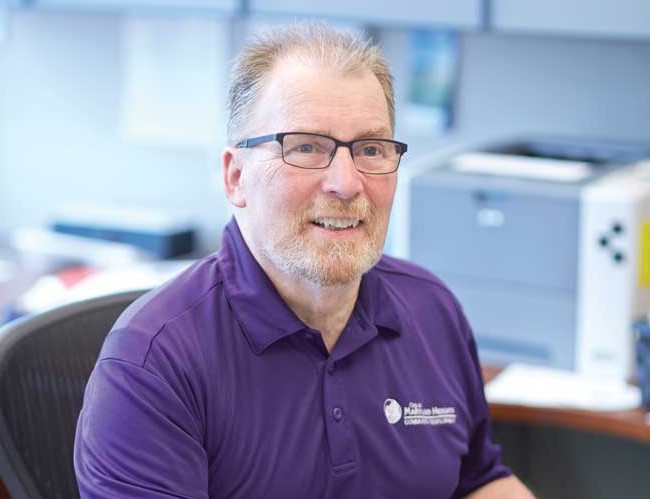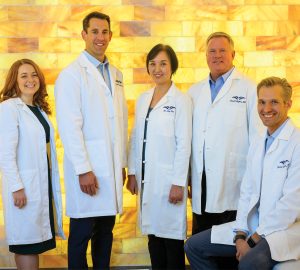In 2012, 53-year-old Wayne Oldroyd had just wrapped up a work meeting when he realized his left arm wasn’t working. “At first I thought I was hyperventilating because I had been talking fast and furious, but I soon realized I was actually having a stroke,” he says. Less than 40 minutes later, he began receiving treatment from SLUCare physicians at Saint Louis University Hospital, which received the gold award for stroke from the American Heart Association.
That’s where he met Dr. Eli Feen. “After identifying that he had a hemorrhage in his brain and that his blood pressure was elevated, we admitted him to the neurocritical care unit to get his blood pressure under control and make sure he remained stable from a neurological standpoint,” says Dr. Eli Feen, SLUCare neurologist and associate professor of neurology at Saint Louis University School of Medicine.
Patients receiving treatment at Saint Louis University Hospital’s neurointensive care unit undergo continuous monitoring by SLUCare physicians so intervention can be administered at the first sign of additional stroke episodes. This means that patients like Oldroyd, who suffered a second stroke less than 48 hours after his initial episode, can receive treatment almost immediately. “Twenty-four hours a day, he was in front of a specialist nurse who made sure his blood pressure remained under control,” Feen says. “And if there was any change in his neurological condition, a neurologist was literally minutes away.”
Because stroke can cause myriad issues and complications, SLUCare’s stroke team has immediate access to other specialists, including cardiologists, neurointerventionalists, neurosurgeons, vascular surgeons and emergency medicine specialists, Feen says. “I can utilize colleagues to identify what needs to be done to maximize a patient’s recovery,” he says. This can mean anything from calling in a psychiatrist to handle depression after a stroke or a neuropsychologist to identify areas of cognitive weakness that need special rehabilitation, or having a physician place a heart rhythm monitoring device, he explains.
Getting Oldroyd in a stable condition was only the beginning of his recovery. “We sat him down with our experts to determine what would be the best plan for rehab,” Feen says. And as part of his rehab, Oldroyd continues to see Feen. “I want to make sure the patient’s rehab is progressing, determine what caused the stroke—in Mr. Oldroyd’s case it was high blood pressure—and make sure we are treating that,” he says. “I also was concerned with helping him maximize reintegration into the world.”
Although his rehabilitation was difficult and he relies on the assistance of a cane or wheelchair to get around, Oldroyd was able to return to his work as Maryland Heights’ director of city planning, a phenomenal outcome from the perspective of both patient and doctor. “Getting back to work was a huge motivator for me,” Oldroyd says. “It kept my head in the game as I was recovering, and I was ultimately fortunate that the stroke affected my physical, not my mental, well-being. Dr. Feen was empathetic, he listened and he engaged, and as a stroke patient, that’s really what you’re looking for.”
Pictured: Wayne Oldroyd, whose stroke recovery was supervised by Dr. Feen.
[Dr. Eli Feen practices at the SLUCare Doctors Office Building at 3635 Vista Ave. For more information, call 314.977.4440 or visit slucare.edu.]








